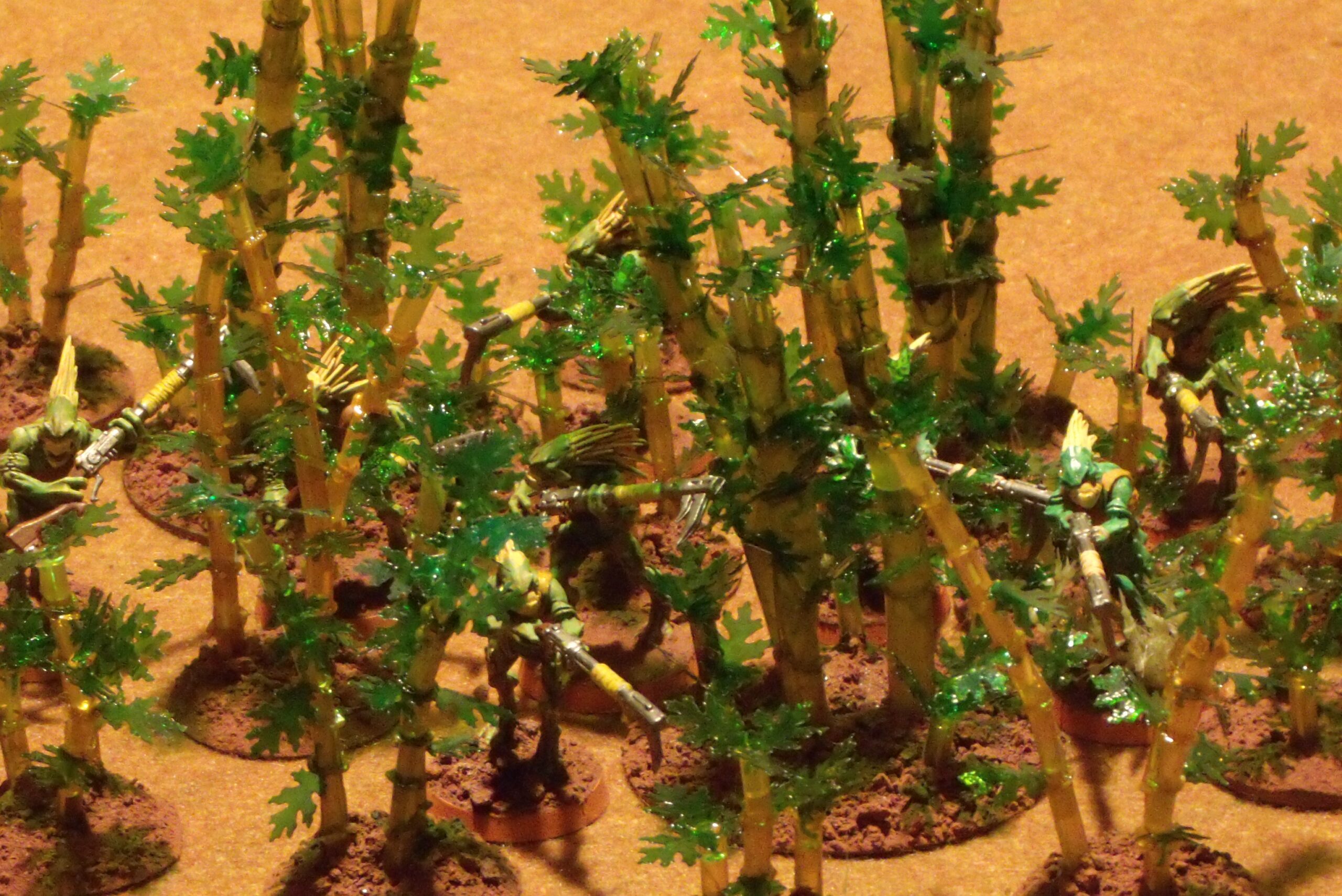
Paper punches are great tools to use when making plants. Several companies makes them and if you shop around you can get a wide variety of different ones that would be useful for making terrain. The scrapbooking section of craft stores is usually filled with them. The potential for making many different plants quickly, and at low cost, is incredible.
The punches are designed to cut paper so you will need to do a little experimenting to find a plastic that works with them. Blister plastic is generally too thick and won’t cut. Softer plastics also don’t work because they tear instead of cutting. We ended up using some sheet plastic that was leftover from an earlier project. It’s .005 thick and made from a PVC plastic. The plastic sheets that they sell at office supply stores for use in printers should work, as long as they are about the same thickness.
When the cuttings come out of the punch they are very two dimensional looking. A little reshaping over a candle fixes that very quickly. We mounted them on bases in groupings of six to nine cuttings, then flocked the base.
Star Plants
We used a simple flower shaped paper punch, wire, and some glass beads to make these. We started with a small steal wire since these were very slim and needed to be stiff enough to stand on their own. The glass beads and flower petals were alternately stacked onto the wire, and glued in place with superglue.
Gelatinous Bamboo
For this plant we started with some coffee stirrers (a few regular straws for the big ones), and a paper punch that we got on sale for $3.
We cut each straw into about eight pieces (just make sure that they are about twice as long as the desired length of each segment when finished). One end is flared out using a candle to melt the plastic. The other end is then tapered in by pressing and rolling between your fingers.
If you cut a slit about half way down the straw this tapering process is much easier. Then simply stack one inside of another until you reach the desired height of the plant. We used a little hot glue on each joint, and inserted a leaf stem into the joint. The straws are very flimsy on their own so we used a lot of glue to support them internally. The plant was painted in one solid color since the leaf, and stem were made from differently tinted plastic, and provide some interesting contrast on their own.





















